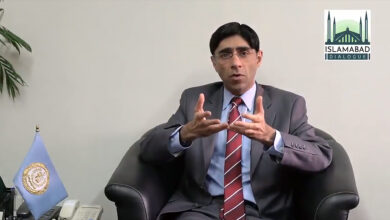

NEW DELHI — Airflow obstruction or asthma was found to be in 29.3 percent of children in Delhi (the capital state of India) through a study.
The study was conducted across 12 randomly selected schools in Delhi, Kottayam (a district in the southern state of Kerala), and Mysuru (a city in India’s southwestern Karnataka state) to evaluate the lung health status of 3,157 adolescent school children.
The study further revealed that air pollution is stunting children’s brains, impacting their neurodevelopment and cognitive ability, and can trigger asthma and childhood cancer.
Lung Care Foundation and Pulmocare Research and Education (PURE) Foundation conducted the study with a primary aim to assess the respiratory health of adolescent school children studying in private schools in Delhi and compared them with relatively cleaner cities in terms of particulate matter air pollution, i.e., Kottayam in Kerala and Mysuru in Karnataka.
The study revealed that around 29.3 percent of children from Delhi were found to have airflow obstruction/asthma on spirometry as compared to 22.6 percent of children in Kottayam and Mysuru.
This difference was despite the fact that two factors associated with childhood asthma, namely family history of asthma and smoker in the family, were more prevalent in Kottayam and Mysuru.
“On spirometry, boys were observed to have a two-fold higher prevalence of asthma than girls. In Delhi, 37.2 percent of boys had airflow obstruction/ asthma as compared to 19.9 percent of girls,” the study read.
Further, it was found that among 29.3 percent of children observed to have asthma on spirometry in Delhi.
Only 12 percent reported having been diagnosed with asthma, and only 3 percent used some form of inhalers.
In contrast, among the 22.6 percent of children observed to have asthma on spirometry in Kottayam and Mysuru, 27 percent reported to have been diagnosed, and 8 percent were using some form of inhalers.
Parvaiz Koul, professor and Head at Internal and Pulmonary Medicine, Srinagar, has suggested implementing the results into policies.
“The results of this study need to be implemented into policies not only as health policies but also as educational policies,” Koul said.
The study also revealed that in Delhi, 52.8 percent of school children reported sneezing, 44.9 percent reported itchy watery eyes, 38.4 percent reported significant cough, 33 percent reported itchy rash, 31.5 percent reported shortness of breath, 11.2 percent reported chest tightness, and 8.75 percent reported eczema.
However, in Kottayam and Mysuru, 39.3 percent of school-children reported sneezing, 28.8 percent reported itchy watery eyes, 18.9 percent reported significant cough, 12.1 percent reported itchy rash 10.8 percent reported shortness of breath, 4.7 percent reported chest tightness, and 1.8 percent reported eczema.
Arvind Kumar, Founder, and Trustee at Lung Care Foundation and Chairman of the Institute of Chest Surgery, Medanta, Gurugram, Haryana, said this study is an eye-opener.
“It has shown an unacceptably high prevalence of respiratory and allergic symptoms, spirometry-defined asthma, and obesity in Delhi Children.”
“Air Pollution is the probable link with all three. It is high time that the air pollution issue in Delhi and other cities are settled systematically to save the future of our children.”
As per the study: Children who have been exposed to high levels of air pollution may be at greater risk for chronic diseases such as cardiovascular disease later in life. One reason why children are particularly vulnerable to the effects of air pollution is that they breathe more rapidly than adults, and so absorb more pollutants.
“Obese/overweight children had a 79 percent greater chance of having asthma on spirometry across all three sites combined. This association was 38 percent higher in Delhi children as compared to their counterparts,” the study read.
Through this study, it was revealed that a significant number of asthmatic children are not diagnosed to have asthma, and a vast majority do not receive the right treatment. The figure of which is higher in Delhi as compared to Kottayam and Mysuru.
Sundeep Salvi, Director, Pulmocare Research and Education (PURE) Foundation, Pune said, “This is one of the first studies in India among adolescent school children that have shown a strong association between obesity and asthma.”
“And that air pollution may have a direct link between the two. Breathing polluted air can make children fat, and this may increase their risk of developing asthma.”
(With inputs from ANI)
Edited by Amrita Das and Pallavi Mehra
The post 29.3 Percent Adolescents In Delhi Have Asthma Linked To Air Pollution appeared first on Zenger News.




